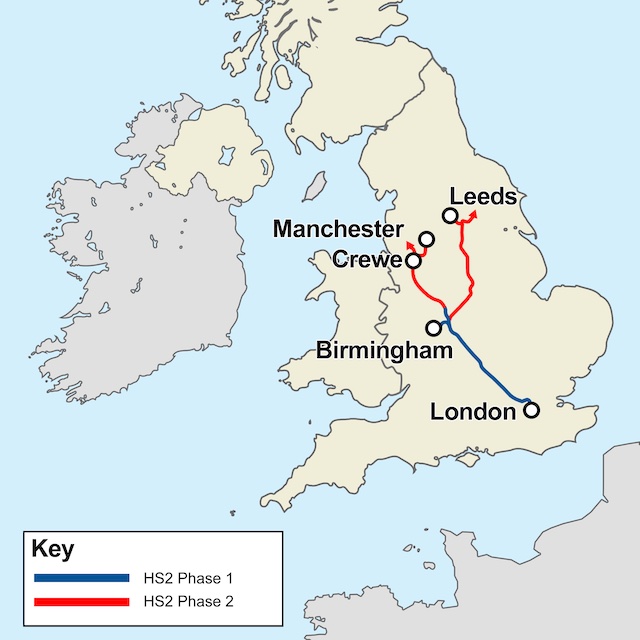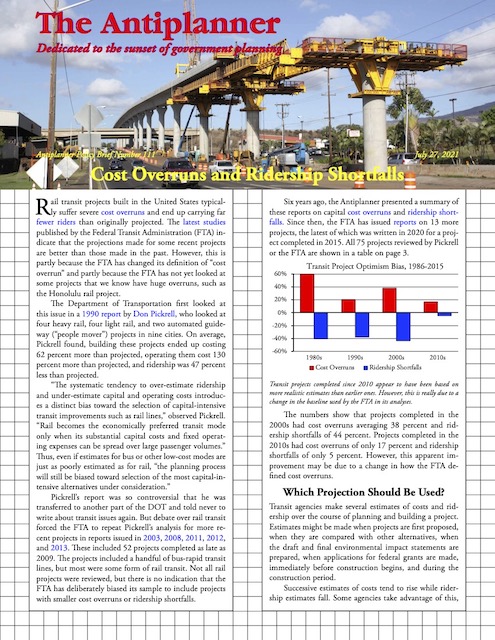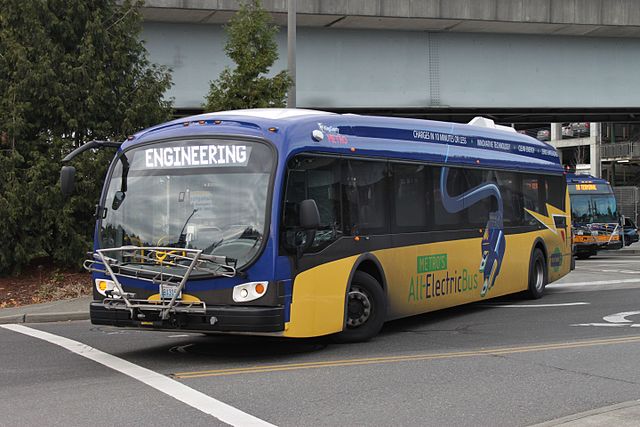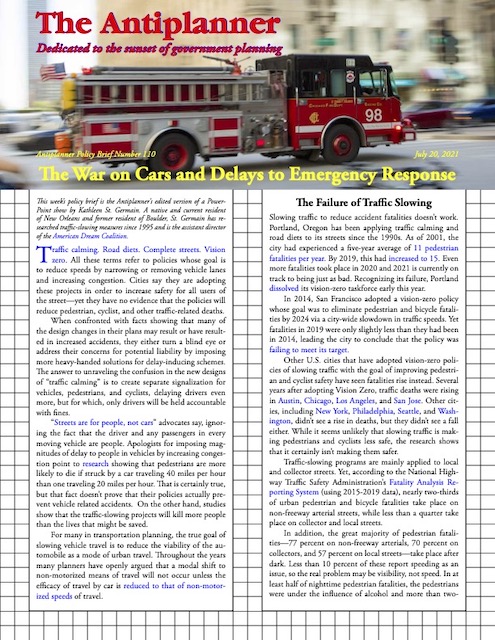In 2014, the Metropolitan Council—the Twin Cities’ regional planning agency—proudly announced that it was adopting a regional transit equity program. Under this program, the region would spend billions of dollars building light-rail lines to wealthy, largely white suburbs. Meanwhile, it would spend a few million dollars building 150 to 200 bus shelters, most of them in low-income, largely black, neighborhoods.
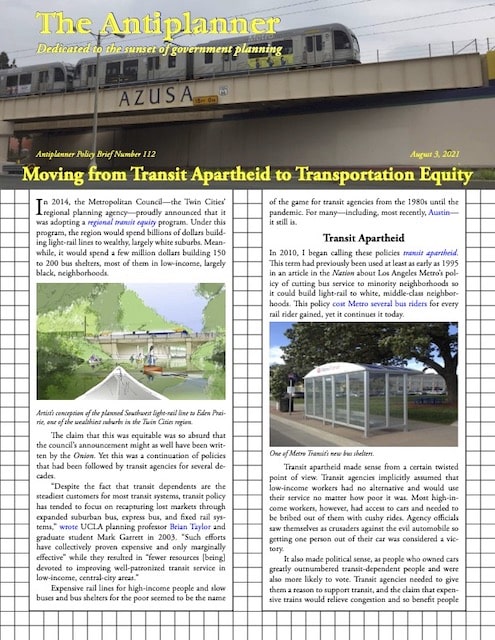 Click image to download a three-page PDF of this policy brief.
Click image to download a three-page PDF of this policy brief.
The claim that this was equitable was so absurd that the council’s announcement might as well have been written by the Onion. Yet this was a continuation of policies that had been followed by transit agencies for several decades. Continue reading


